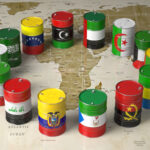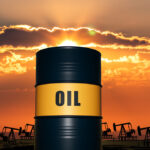Aramco looking at making a $5 billion solar investment to attract attention to oil company’s IPO
Saudi Aramco, the world’s largest oil company in terms of production, is considering a $5 billion investment in solar energy. The substantially step into the renewable energy sector is part of a broader effort by Saudi Arabia to reduce its dependence on fossil fuels, and may also be an attempt to attract more investors to Aramco’s pending IPO that might otherwise stay away from the oil-giant.
“They immediately open themselves up to a larger pool of investors,” said Scott Gehsmann, partner at the deal advisory service of the accounting and consulting firm PwC, told Bloomberg. “If a company is looking at raising capital, they typically must have a strategy around sustainability. If they don’t have one, it can be perceived as a negative.”
The kingdom has said in the past it believes Aramco is worth more than $2 trillion, pricing the 5% stake in the company at approximately $100 billion. Wood Mackenzie has put the valuation nearer to $400 billion, considerably less than Saudi Arabia self-values its crown jewel, but still netting the kingdom $2 billion for a 5% stake in the company if the value came in at $400 billion.
During the Q&A that followed a presentation given by Tom Petrie, founder of Petrie Partners, at EnerCom Dallas, Petrie said the actual valuation for the company will likely land somewhere in-between Saudi Arabia’s own estimate and the one put forward by Wood Mackenzie.
Environmental sustainability is important, but is it what oil company investors want?
Environmental, social and governance (ESG) factors are becoming increasingly important to investors, and the oil and gas industry is taking steps to meet the changing expectations of the market. Institutional investors with $60 trillion under management have signed up to the Principles for Responsible Investment, pledging to incorporate ESG measures into their investment decisions. Companies like ExxonMobil (ticker: XOM) and Royal Dutch Shell (ticker: RDSA) are already reporting ESG data on factors ranging from carbon emissions to women in senior positions.
As Bloomberg Gadfly columnist Liam Denning points out, Aramco may be barking up the wrong tree, however.
“A multi-billion-dollar solar program would have an especially muddying effect on the equity story [for Aramco],” said Denning. “That’s because the biggest impediment to achieving a high valuation is that Aramco will remain 90-percent-plus owned by the Saudi Arabian government.”
With concerns about transparency remaining, investors may be more worried about their lack of voice in the company than Aramco’s environmental sustainability efforts. Rosneft, Russia’s oil-giant, suffers from a similar problem, trading at a discount to international peers like Exxon despite having some of the largest crude reserves in the world.
“Valuation is a tricky thing to explain, but I am guessing investors aren’t discounting Rosneft because they want it to embrace wind power in a big way,” said Denning. “Rather, as with other national oil companies, there are understandable concerns about investing in what is, essentially, a privatized arm of the government.”
Aramco investing $7 billion in a more conventional project
Saudi Aramco has also said in the last week that it will take part in the $27 billion Refinery and Petrochemicals Integrated Development (RAPID) project with Malaysia’s Petroliam Nasional, or Petronas, as it’s commonly called. The Saudi state-owned oil company will invest $7 billion in the downstream project, according to reports from Bloomberg.
Aramco will supply 70% of the crude feedstock required for the refinery, according to a press release from Petronas. The Malaysian oil company will supply the plant with natural gas, power and other utilities.
The downstream investment continues to be a strategy for Saudi Aramco. It’s a way to lock in demand for its production by signing long-term deals with refiners. RAPID will border the traditional Asian oil trading and refining center of Singapore, putting it near China and India, two of the world’s largest demand centers for crude and finished products.







